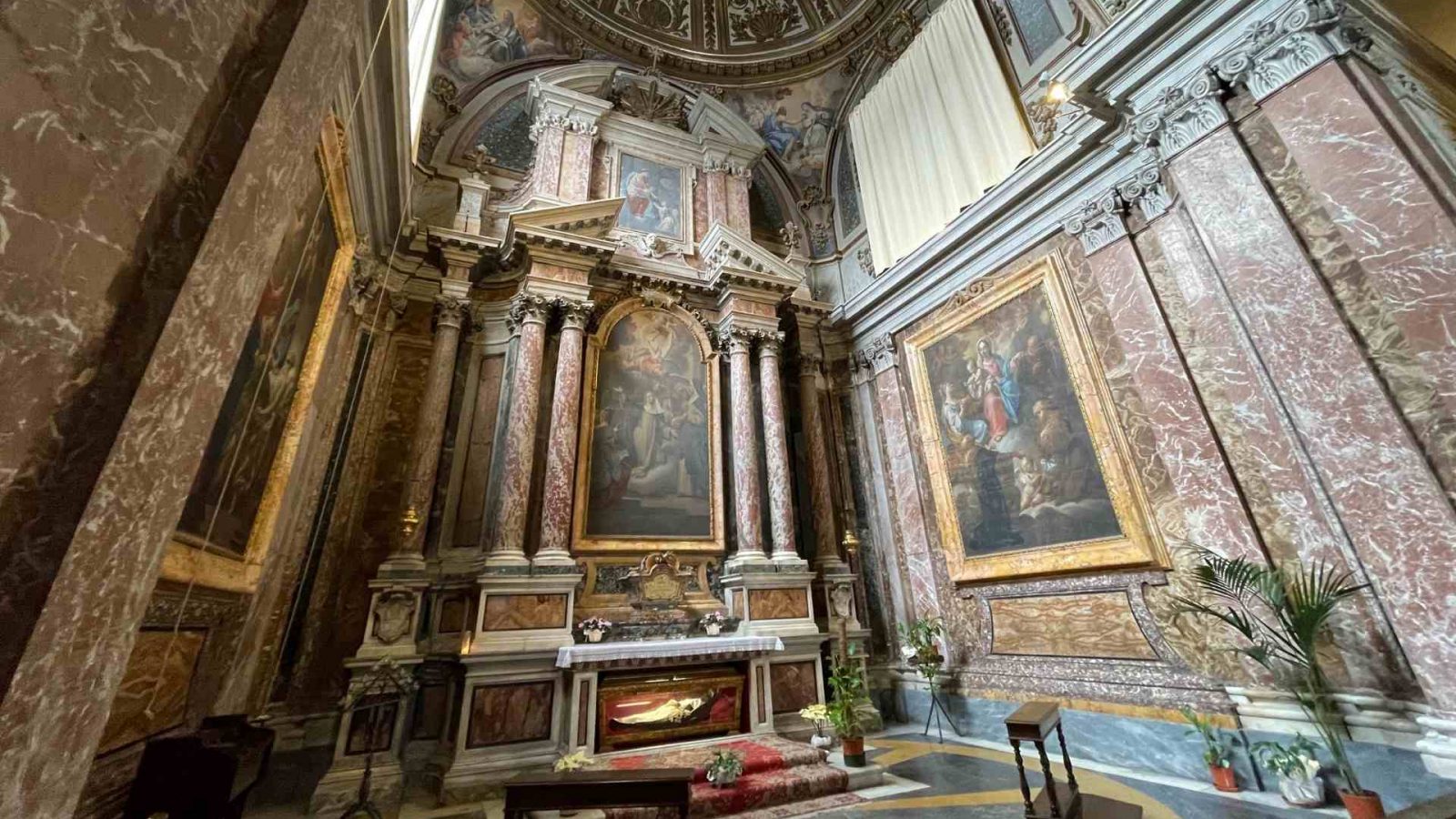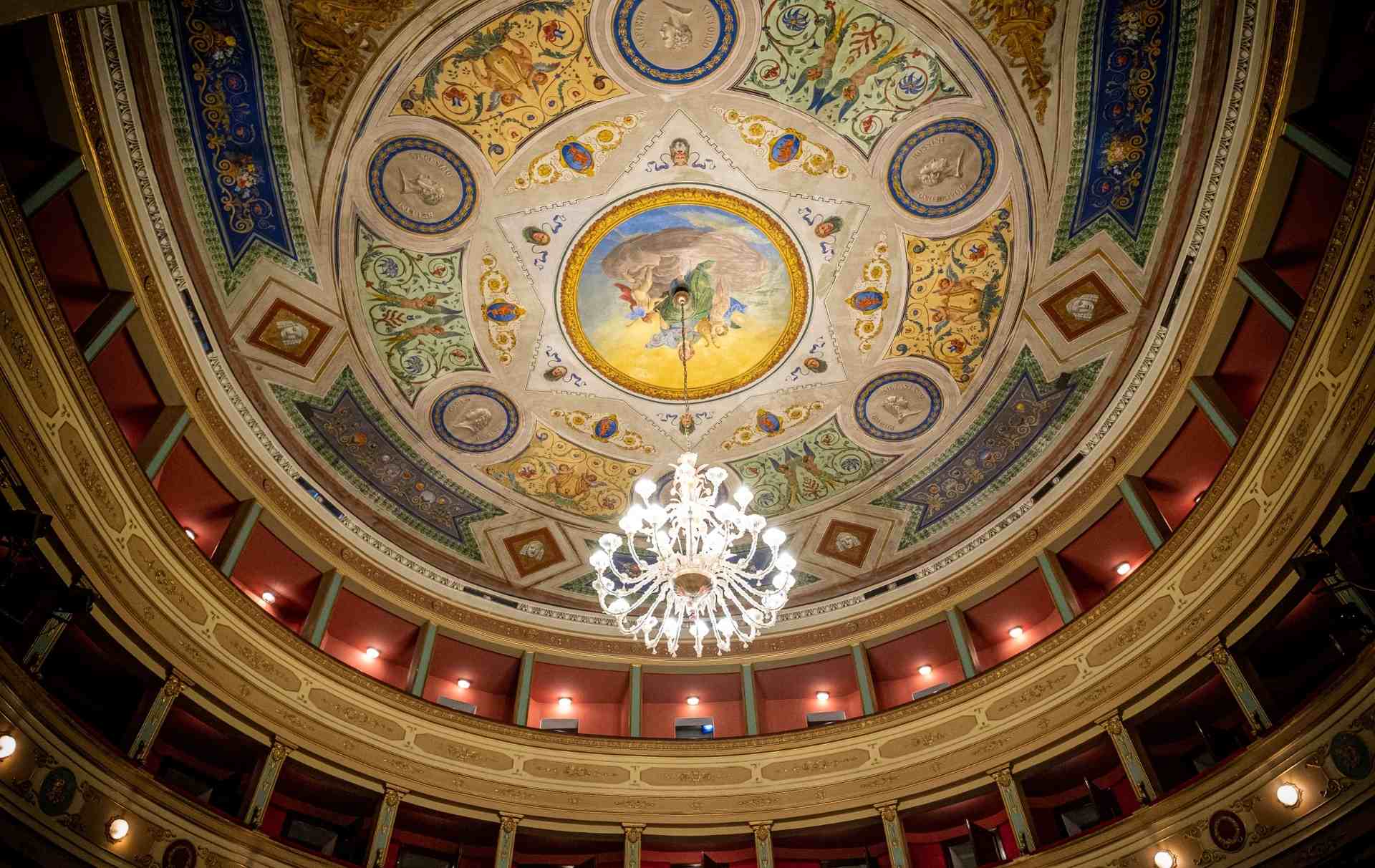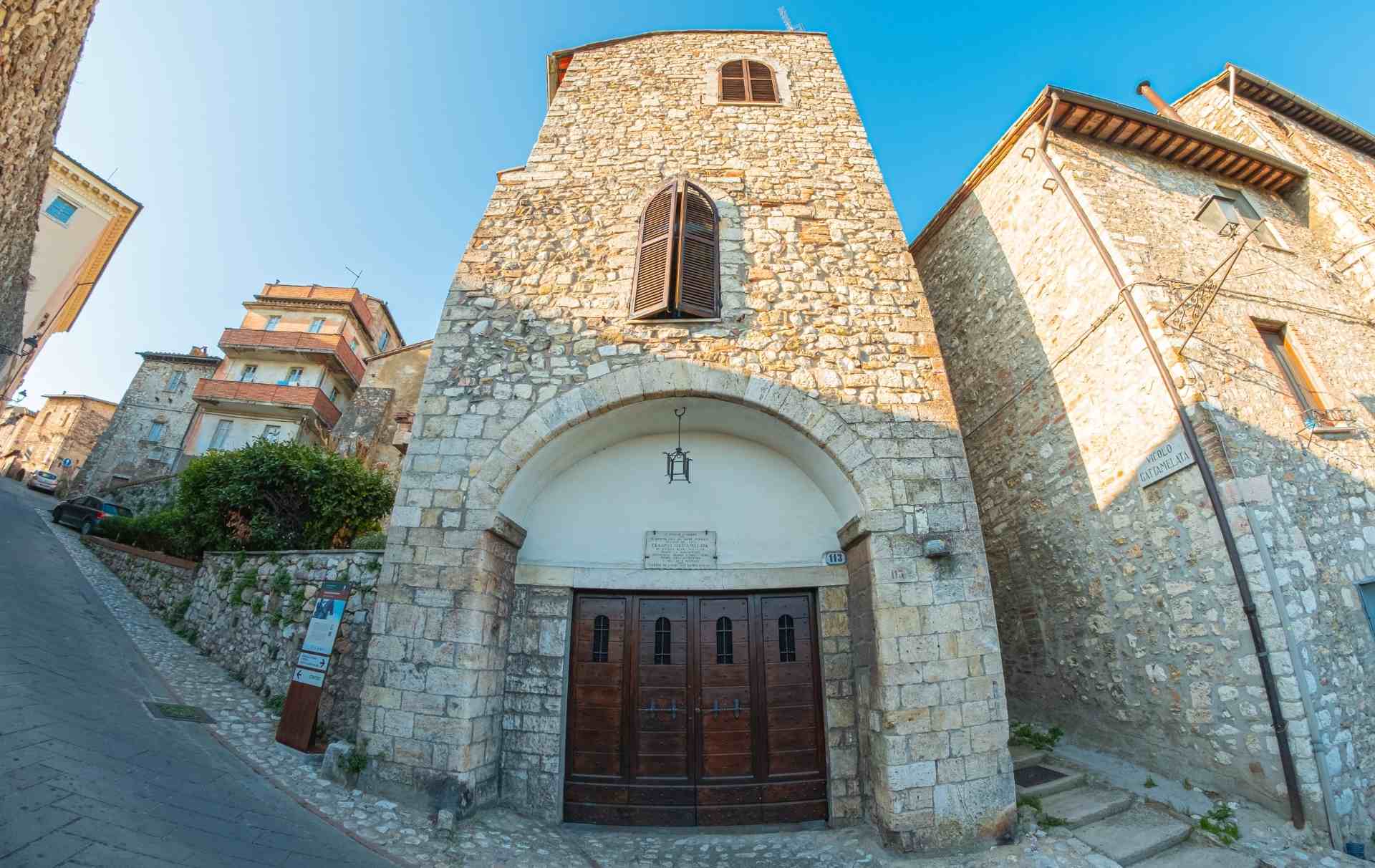On the two sides of the transept there are two of the most singular works of Narni’s Cathedral: the Chapel of the Blessed Lucia, in baroque style; the Chapel of San Giuseppe, in more late style, almost rococo.
The Chapel of Blessed Lucia.
Before the intervention of the Cardinal Sacripante, the chapel was dedicated to Santa Caterina of Alessandria, that became at the end of the works in 1714, the splendid Chapel of the blessed Lucia: one of the most surprising elements of the Cathedral of Narni which guests, under the altar, the relics of the Blessed Lucia of Narni, noble Dominican tertiary Narnese (1476-1544).

From Sant’Antonio to the Blessed Lucia: the history of the chapel projected by Rainaldi Master.
The implementation of the chapel has a particular history linked with his customer and his role in the Roman Curia.
At the end of 1711 is documented the purchase by the Cardinale Sacripante of the altar dedicated to Sant’Antonio Abate of the Church of SS.Apostoli to Rome.
Artwork of the baroque architect Rainaldi -who is considered one of the fathers of the roman style with Bernini and Cortona-, the altar was transported by Urbe to the Tevere and, after came to the oil port of Otricoli, arrived in Narni to be use for the new chapel .
Built in 1656 has an archetypal value of the facades of the churches projected by Rainaldi like the splendid Santa Maria in Montesano and Santa Maria dei Miracoli, twin churches in Piazza del Popolo or Sant’Agnese in Piazza Navona.
The iconographic aspect.
There are four canvas by Francesco Trevisani, prominent painter of Roman art dominated by the Academy of San Luca:
- above the altar, the Blessed Lucia who receives the stigma;
- surmounted by the mystical marriage of the Blessed with the Child Jesus stretched out on the arms of the Virgin;
- on the right wall, Saint Catherine of Alexandria, former owner of the chapel;
The frescos in the corner of the cupola, with the representations of the life and the miracles of the Blessed Lucia were realized by Luigi Garzi.
The Chapel of San Giuseppe.
The Chapel of San Giuseppe was completed in 1757 by Francesco Antonio Risi for his family and, particularly, for the burial of his brother Antonio, abate to Città di Castello.
The chapel is an example of the late baroque style. All of the complex is in wood finely sculpted and decorated with sculptures representing the virtues. The altar canvas represents the transit of San Giuseppe; the right oval shows the birth of San Giovanni Battista and the left one the Holy Family.
The author of those artworks is the painter Giuseppe Sortini (1760).

The visit to the Cathedral.
Continues the visit to the Cathedral:
Go back to the Cathedral’s page.
Cathedral of San Giovenale
Piazza Cavour – 05035 Narni TR
Opening hours:
- from 8am to 12.30pm
- from 3.30pm to 7pm
It is suggested to park the car in the Suffraggio’s parking lot and go up with the elevator until Via Garibaldi reaching Piazza Cavour.
Discover Narni.
Continue to walk with us discovering what to see inside the walls of Narni.
Or discover the points of interest of Narni and of its territory:

Fiera Gate
The ancient and austere Fiera Gate, in the past called Porta San Vittore from the name of a church near by, there is on the

Manini Theatre
At the end of Via Garibaldi , in front of the construction which hosted the Bank , there was the Municipal Theatre of Narni dedicated

House of Erasmo Gattamelata
The House of Erasmo Il Gattamela, where born one of the biggest captains of fortune of the Middle-Age, is along the walls of the town




